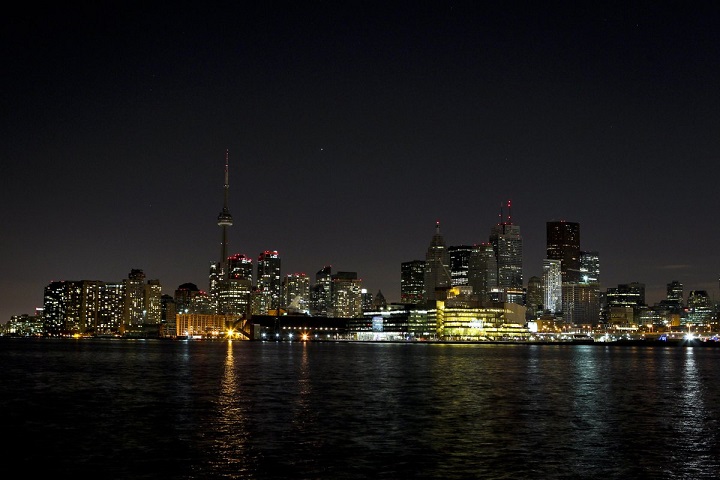Lights were switched off all around the world for an hour at 8:30 p.m. Saturday to mark the 10th annual Earth Hour.

People were encouraged to dim their lights and participate in the event that draws attention to climate change and reducing greenhouse gas emissions.
According to Toronto Hydro, there was a 2.8 per cent or 77 megawatt drop in electricity demand. That is the equivalent of 31,000 homes being taken off the Toronto Hydro grid.
READ MORE: Earth Hour is 10 years old
“We’re happy with the results of this year’s Earth Hour and want to thank everyone that took part. But we also want to recognize everyone out there that makes an effort to reduce their electricity use each and every day of the year,” said Tori Gass, spokesperson for Toronto Hydro in a statement.
In 2016, however, the drop in demand was 3.2 per cent or 89 megawatts which is the equivalent of 36,000 homes.
The most successful Toronto Earth Hour was back in 2009 when there was a 15.1 per cent drop in demand, according to Toronto Hydro.
Electricity consumption does not necessarily correlate with participation numbers or the overall success of the event, however.
READ MORE: Edmontonians engaging with Earth Hour as event marks decade of climate-change awareness
Toronto held a number of different events to mark the occasion, including candlelight walks around the city. The Toronto sign and the CN Tower went dark as well.
The WWF-Canada told Global News the event is not necessarily about power consumption but rather has always been about a visual display demonstrating one action to combat climate change.
The initiative began in Australia in 2007 as a grass roots gesture by the World Wildlife Fund (WWF) Australia against man-made carbon dioxide emissions linked to a warming planet.
Now more than 7,000 cities across 172 countries and territories participate around the world.
With files from Reuters
- Budget 2024 failed to spark ‘political reboot’ for Liberals, polling suggests
- Train goes up in flames while rolling through London, Ont. Here’s what we know
- Peel police chief met Sri Lankan officer a court says ‘participated’ in torture
- Wrong remains sent to ‘exhausted’ Canadian family after death on Cuba vacation




Comments